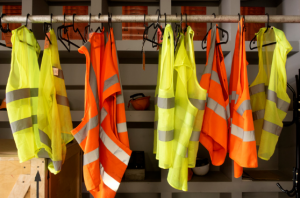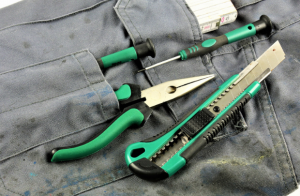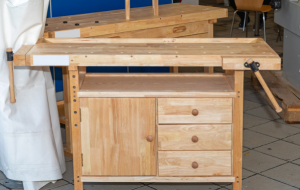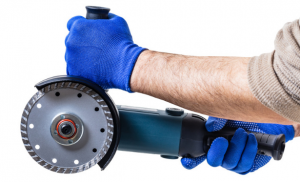Table of Contents
Having the right tools and equipment for the task is half the job when it comes to being successful with your DIY projects. If you’re trying to get into DIY and want to know what useful items you might need to get started, then keep reading.
10 Types Of Equipment Every DIY Enthusiast Needs
A Highly Organised Toolbox

Every DIY enthusiast should have a well-organized toolbox filled with the following tools:
- Spanners
- Screwdrivers (with different kinds of heads)
- Tape measure
- Claw hammer
- Grip pliers
- A wrench
- Electric drill
- Spirit level
- Utility knife and blades
- Allen keys
- Duct tape
- Flashlight
Having an organised toolbox is the staple to succeeding with any DIY project, it will provide the basis for you to complete almost any task. It helps if you have sections within the box to store things individually so they’re easier to find. The last thing your business needs when in the middle of a DIY job is to not be able to find the tool you need when you know you have it.
Workwear

Many of us may forget to wear safety workwear if we’re completing tasks around the house, but it is still a good idea to build ourselves some protection as accidents can of course still happen when doing DIY. The type of workwear you need depends on the task you’re going to complete, but there are a few essentials that will help to keep you safe.
Safety trainers
A great option if you want protection from dropping heavy tools and machinery. A pair of safety trainers from Safety Boots UK is a more flexible and lightweight alternative to work boots if you’re just getting a few jobs around the house done.
Safety Gloves

There is a range of safety gloves you can choose from, from coated fabric gloves to leather. They can prevent cuts, grazes and risk of infection if you have cuts on your hands.
Safety Goggles and Glasses

Eye protection is essential if you’re completing DIY tasks such as cutting wood or knocking down walls. Dust and small pieces of materials landing in your eyes could potentially cause a lot of damage, so it’s wise to wear some safety goggles or glasses when carrying out this kind of work.
Work Vests and Bodywarmers

Work vests are useful as they feature pockets and compartments for keeping things such as a tape measure, pen markers, and flashlights. As well as the option to have them in the form of bodywarmers if you appeal to working in the winter.
Work Trousers

Another alternative to work vests, featuring pockets to carry tools, and are made from an extra thick material to protect you from cuts, grazes, heat and cold.
A Workbench

Having a workbench gives you a space to complete tasks that you need a surface for. Most workbenches can be ergonomic and adjusted to the height you need, as well as heavy weight-bearing so can be safer than make-shift work surfaces.
A Power Saw

Power saws allow you to make light work of cutting through the wood rather than using a handheld saw- allowing you to get carpentry tasks done in half the time.
Portable Power Stations

A useful piece of equipment to carry with you is a portable power station, as it will allow you to use electronic equipment in whichever location you need to work in as long as it’s a safe and dry environment.


